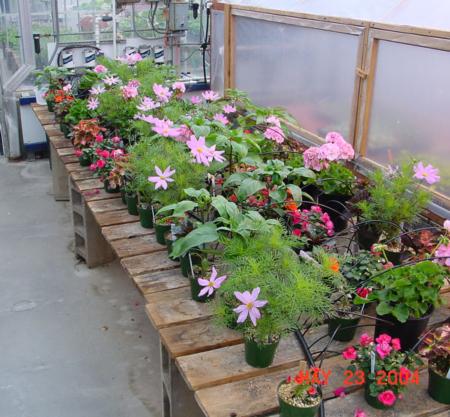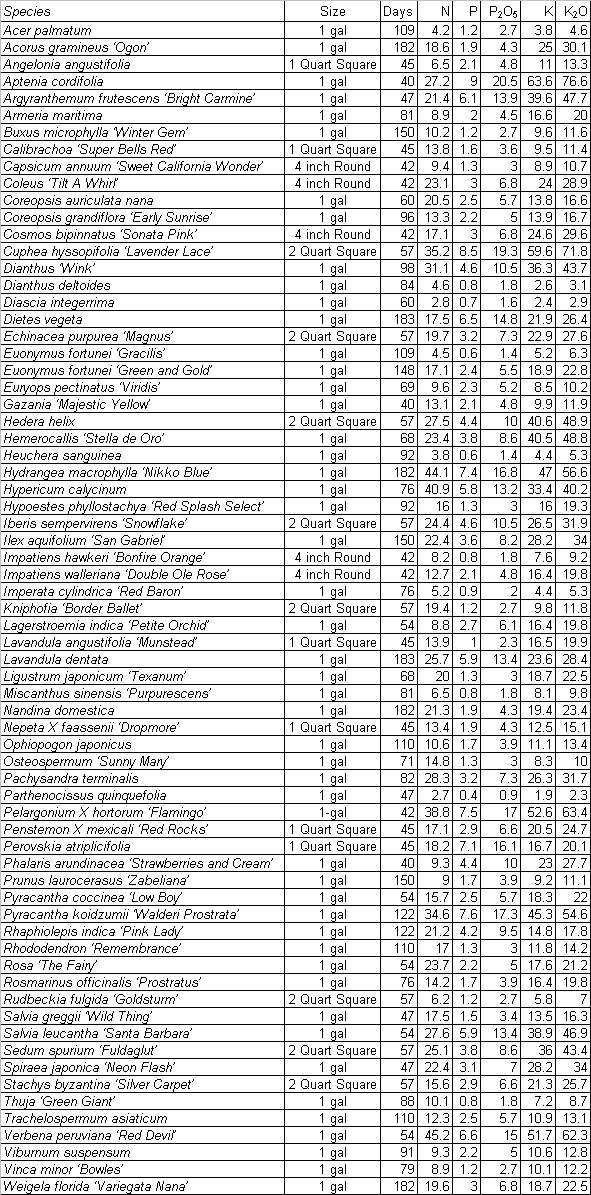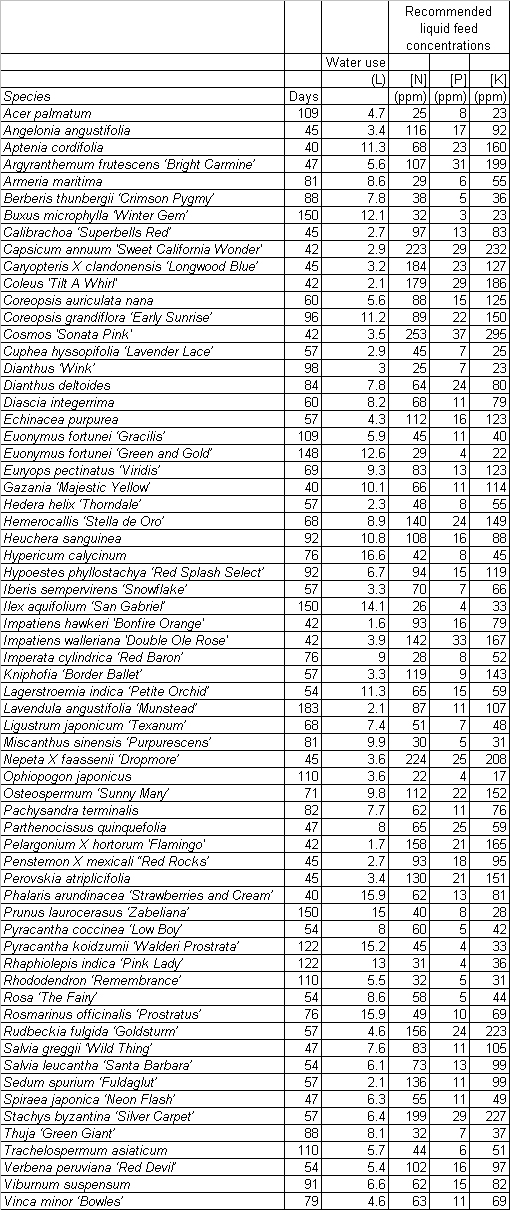Tailoring fertilizer rates for diverse nursery crops
by Richard Evans and Linda Dodge
Current water quality standards in California necessitate much more careful fertilization practices by nursery growers. The fertilizer recommendations growers have relied on for decades must be reconsidered because they were established at a time of low fertilizer costs when agricultural water quality regulations were not as strictly enforced. Under those conditions, most guides recommended fertilizer applications well in excess of crop needs. Now, unless leaching and runoff water are captured on nursery property, growers need to tailor fertilizer application rates to meet crop needs with a high level of efficiency.
Factors like variable weather, changes in fertilizer release rate and lack of uniformity in irrigation systems can wreak havoc on the best fertilizer management practices. The biggest obstacle, however, is the variation in fertilizer requirements among the thousands of species and cultivars grown in our nurseries. Food and fiber crop producers have a limited number of varieties or cultivars to choose from, so researchers can easily develop specific fertilizer recommendations for those crops. Those specific recommendations don’t exist for most nursery crops, and they never will. There are too many different crops and too few researchers to make that happen.
There are a couple of things nursery growers can do. First, make a rough estimate of how efficiently you are using fertilizers. Take a look at your records of fertilizer purchases and calculate how many pounds of nitrogen and phosphorus you put on your crops in a year. You’ll need a calculator or spreadsheet to do it. Multiply the total weight of each type of fertilizer by the percentage nitrogen content. For example, calcium nitrate usually is 15.5% nitrogen, so 100 pounds of the fertilizer contains 15.5 pounds of nitrogen. Add together the weight of nitrogen from all of the nitrogen fertilizer sources to find out how much you apply. If it is more than 500 pounds per acre in a year for woody species, you’re probably applying too much nitrogen. For herbaceous species, the upper limit is probably about 800 pounds per acre. Then do the same thing for phosphorus fertilizers. The maximum amount of phosphorus (as P2O5) per acre for woodies should be about 120 pounds annually. For herbaceous plants it shouldn’t exceed 200 pounds per acre. These recommendations assume very high growth rates and crops covering about 70% of the ground surface.
If you have been applying fertilizer at rates higher than those maximum values stated above, you need to take measures to improve fertilizer use efficiency. If your application rates are below those stated above, please follow along – your application rates still might be too high, depending on how fast your crops grow and how much of the acreage is actually occupied by plants.
Growers can improve fertilizer use efficiency by matching application rates to crop demand. Since we lack information about the nutrient requirements for most crops, we have to make some generalizations. To get the information we need for these generalizations, the Fertilizer Research and Education Program, which is administered by the California Department of Food and Agriculture, provided financial support for some research aimed at determining the nutrient requirements of some representative nursery crops. The crops were grown with ample amounts of fertilizer, after which the amount of nitrogen, phosphorus, and potassium in shoots and roots was measured (fig. 1). While the plants were growing, their total water use was also measured. In the end, we could calculate how much of each nutrient was taken up by the plants, as well as how much water they took up.

Fig. 1. A variety of representative nursery crops were grown under optimum conditions to determine their nutrient uptake and water use. (photo by L. Dodge)
Growers who apply dry fertilizers, such as controlled-release products, should use table 1, which presents the amount of nitrogen, phosphorus, and potassium taken up by 69 nursery crops. The values represent ounces of each element per 1,000 plants. The container size and number of days of production are also given. Although the list represents a small fraction of all nursery crops, our hope is that growers can estimate the nutrient needs of their crops based on those in this list that have similar growth characteristics. The values for phosphorus and potassium are presented as both the actual amounts needed and the amounts of P2O5 or K2O, which are how they are usually presented in the analyses of commercial fertilizers.
Table 1. Nutrient requirements of representative nursery crops. Values are given in ounces of nutrient per 1,000 plants. P2O5 and K2O are the rates for phosphorus and potassium, expressed in the units used for commercial fertilizer analyses. 
Table 2 is intended for growers who inject fertilizers into irrigation water. For table 2, we divided the amount of fertilizer taken up by each crop by the amount of water it used during the cropping period. The resulting number represents a reasonable estimate of the appropriate concentration of each element in a liquid feed to satisfy the nutrient requirements of the crop.
Table 2. Recommended liquid feed concentrations for nursery crops. 
It is worth noting that the amount of fertilizer required varies greatly by crop. For example, Hypericum calycinum took up about 41 ounces of nitrogen in the same amount of time that Imperata cylindrica took up 5 ounces. In contrast, the ratio of nutrient and water uptake did not vary nearly as much, so some generalizations about appropriate liquid feed concentrations are possible. In most cases, woody species should receive adequate nutrition from a liquid feed containing nitrogen levels of 50 parts per million [ppm, or mg/L (milligrams per liter)], 20 ppm phosphorus, and 50 ppm potassium. Most herbaceous species require about 100-150 ppm nitrogen, 20 ppm phosphorus, and 120-150 ppm potassium.
Richard Evans is UC Cooperative Extension Specialist for Environmental Horticulture, Department of Plant Sciences, UC Davis and Linda Dodge is Staff Research Associate, Department of Plant Sciences, UC Davis.












